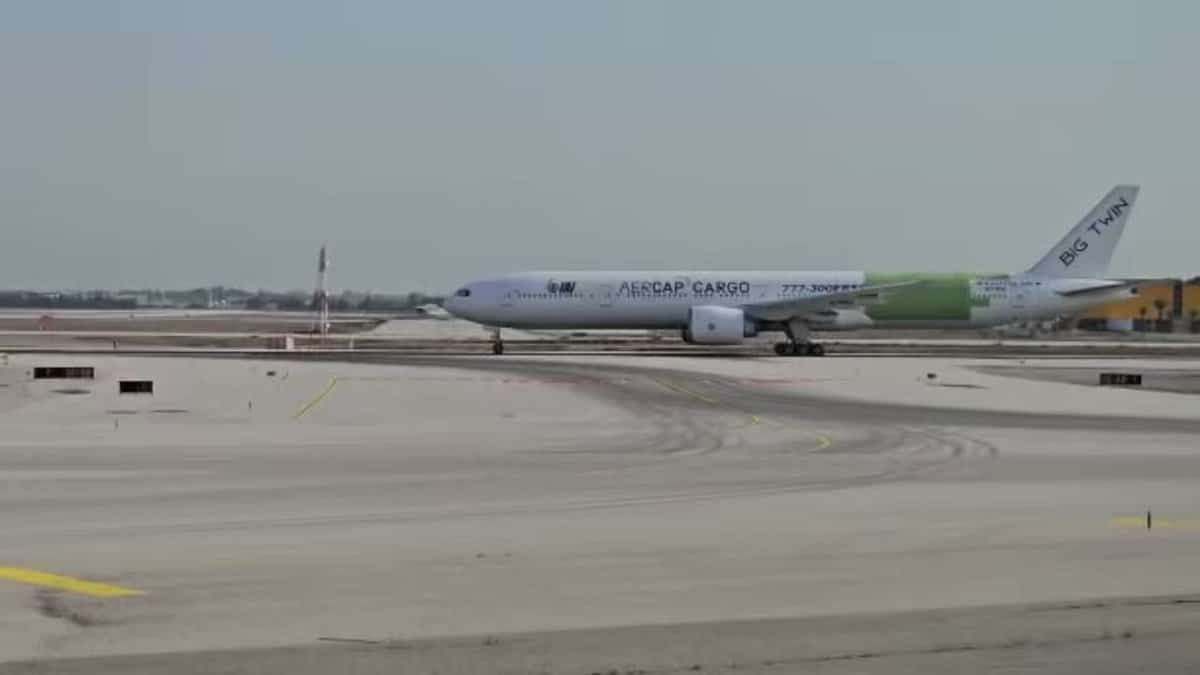Aerospace
IAI convert first Boeing B777-300ER passenger aircraft into freighter

Israel Aerospace Industries (IAI) has successfully completed the first flight of a B777-300ER passenger aircraft after converting it to a freighter configuration for AerCap.
The B777-300ER passenger plane was converted to a “Big Twin” cargo configuration. The Big Twin will be the first twin-engine aircraft of its kind, with a payload capacity of 100 tonnes, once the civil aviation authorities have completed the certification process. The B767-200/300, B747-400, and B737-700/800 freighter programs, which are currently in operation, are only a few of IAI’s 45 years of aircraft conversion experience.
Israel banning planes with four engines(Opens in a new browser tab)
In addition to the facilities of its parent company, IAI is opening a number of remote conversion facilities all over the world to accommodate the rising demand for cargo aircraft. The top airlines in the world, including AerCap, Emirates Cargo, Challenge Group, EVA Air, and CargoJet, have inked passenger-to-freighter conversion contracts with IAI’s Aviation Group worth hundreds of millions of dollars during the past year.
IAI’s Aviation Group’s has certified STCs by the CAAI, FAA, EASA, CAAC and other major Civil Aviation Authorities. In addition, B777-300ER and A330-300 programs are under development, with STCs pending for approval by the civil authorities. IAI-converted aircraft have accumulated over 2,500,000 flying hours with no ADs.
IAI has successfully concluded the 1st flight of a B777-300ER passenger aircraft after converting this to a cargo configuration for AerCap
On conclusion of the certification process by the Civil Aviation Authorities, The Big Twin will be the 1st twin engine aircraft of this type pic.twitter.com/7Bk3xUprLt
— Israel Aerospace Industries (@ILAerospaceIAI) March 24, 2023

Aerospace
Boeing Transfers Rocket Stage to NASA, Paving Way for Human Moon Mission

Boeing has achieved a significant milestone by providing NASA with the second core stage of the Space Launch System (SLS) rocket.
This crucial component, crafted at NASA’s Michoud Assembly Facility (MAF), is set to propel the Artemis II crew into lunar orbit, marking humanity’s return to deep space after a 50-year hiatus.
The monumental Boeing-built rocket stage, the largest element of the Artemis II mission, will embark on a journey aboard the Pegasus barge, traveling 900 miles to NASA’s Kennedy Space Center.
Comparison of two legendary aircraft B777x vs B747 aircraft:Click here
Upon arrival, it will be meticulously integrated with other essential Artemis II components, including the upper stage, solid rocket boosters, and NASA’s Orion spacecraft within the iconic Vehicle Assembly Building. This intricate integration process is a vital step toward the eagerly anticipated Artemis II launch, slated for 2025.
“Boeing-built products helped land humankind on the moon in 1969, and we’re proud to continue that legacy through the Artemis generation,” remarked Dave Dutcher, vice president and program manager for Boeing’s SLS program. “Together, with NASA and our industry partners and suppliers, we are building the world’s most capable rocket and paving the way to deep space through America’s rocket factory in New Orleans.”
NASA, Lockheed Martin Reveal X-59 Quiet Supersonic Aircraft:Click here
The delivery of Core Stage 2 marks a significant achievement in the evolution of the SLS rocket. Towering over 200 feet and powered by four RS-25 engines, this core stage, coupled with two solid-fueled booster rockets, will generate a staggering 8.8 million pounds of thrust. This immense power is crucial to launching Artemis II and future missions into the vast expanse of space.
The SLS rocket stands unparalleled in its capability to transport both crew and substantial cargo to the moon and beyond in a single launch. Its extraordinary capacity will facilitate the delivery of human-rated spacecraft, habitats, and scientific missions to destinations including the moon and Mars, ushering in a new era of space exploration.
-

 Travel1 week ago
Travel1 week agoAir India to Expand US Operations with Three New Routes After a Decade
-

 Travel2 weeks ago
Travel2 weeks agoWhy We Should Avoid These Stamps in a Passport
-

 Airlines1 month ago
Airlines1 month agoInvestigations Reveal Fake Chinese Titanium in Boeing and Airbus Jets
-

 Tech4 weeks ago
Tech4 weeks agoChina’s CATL Plans 1,800-Mile Electric Plane Launch by 2027
-

 Airport3 days ago
Airport3 days agoTop 10 Largest Airports in the World by Size
-

 Aerospace4 weeks ago
Aerospace4 weeks agoChina’s Fighter Jets Turn Wings into Autonomous Drones
-

 Airlines4 days ago
Airlines4 days agoAir India Rolls Out A350s for Delhi-New York JFK and Newark Routes
-

 Defence3 weeks ago
Defence3 weeks agoBoeing Enhances Chinook with New Engines and Block II Upgrades at $96 Million







